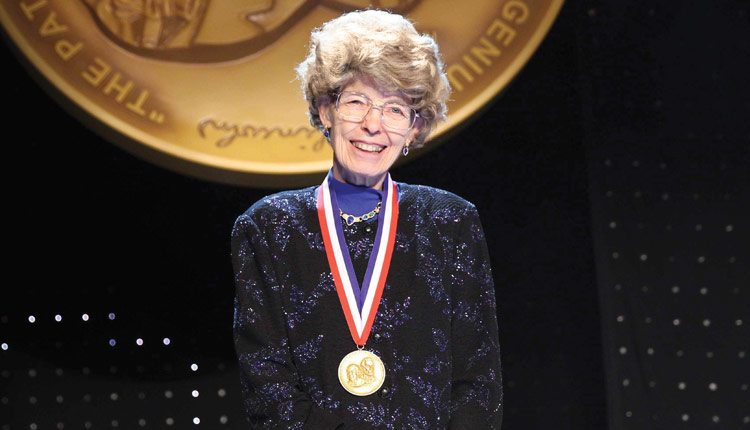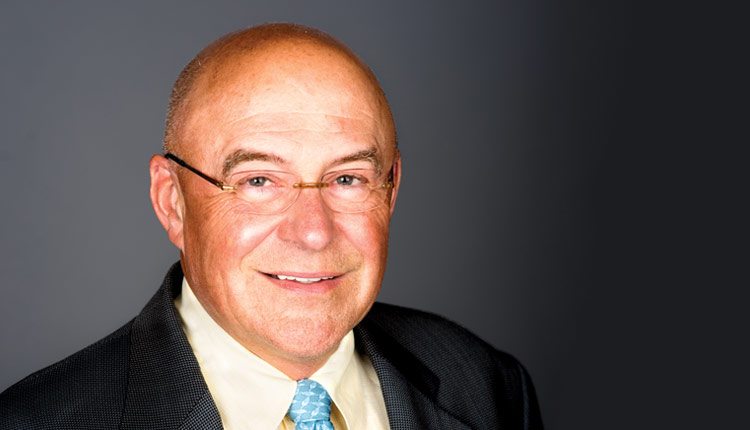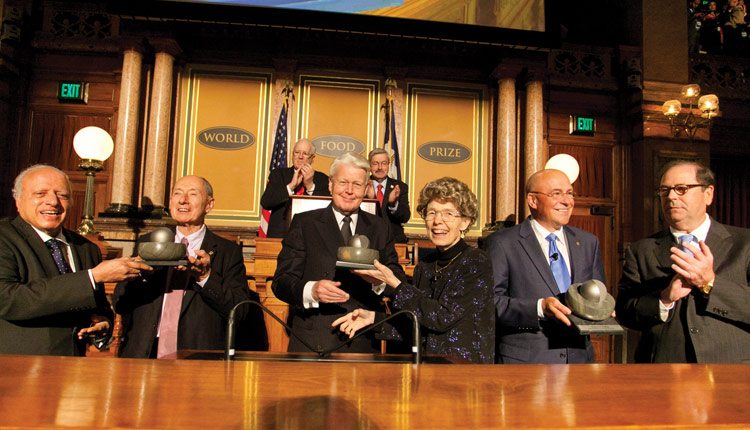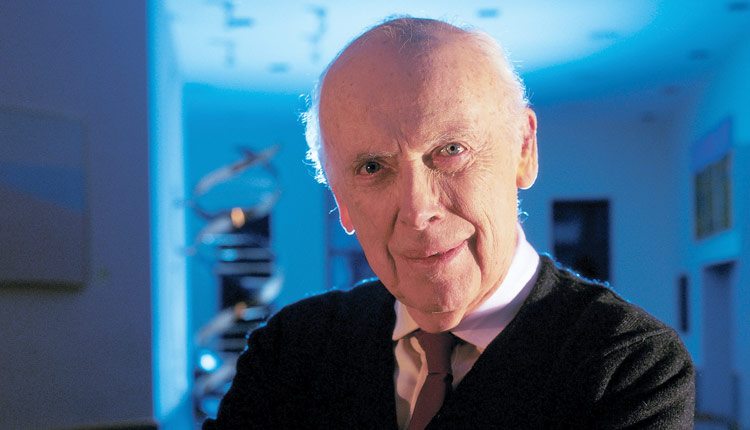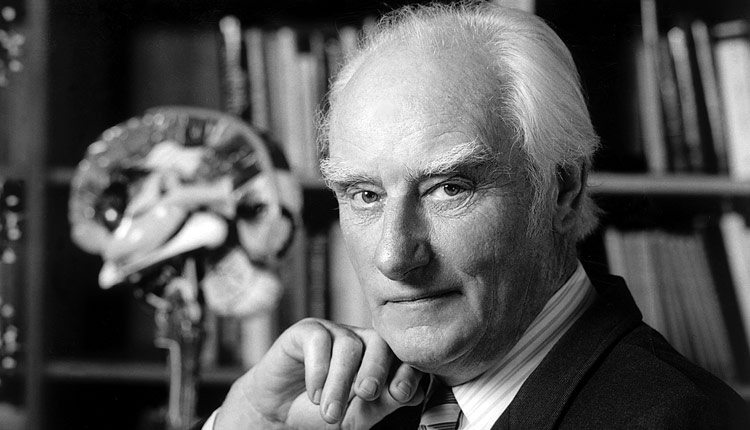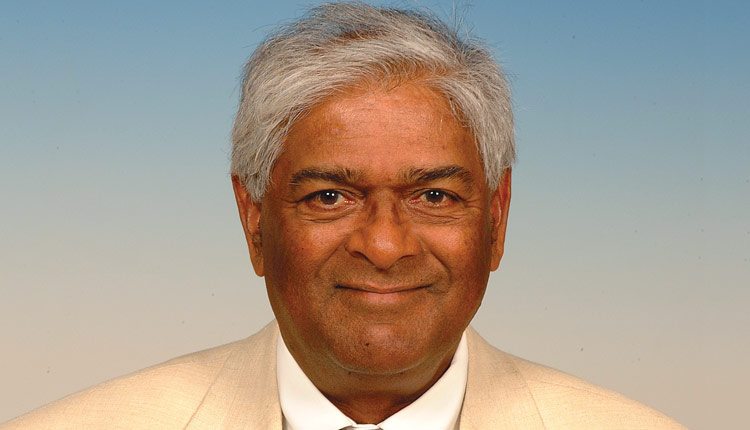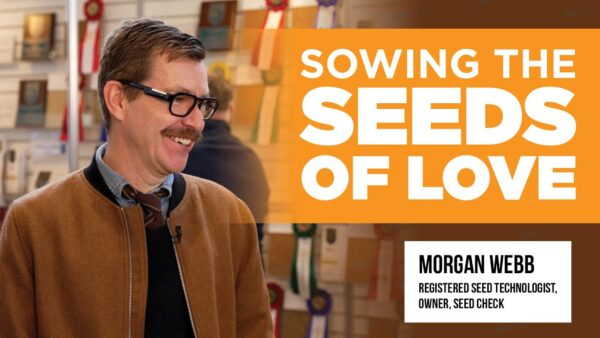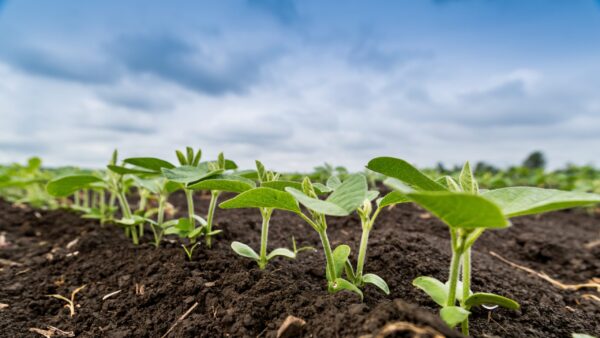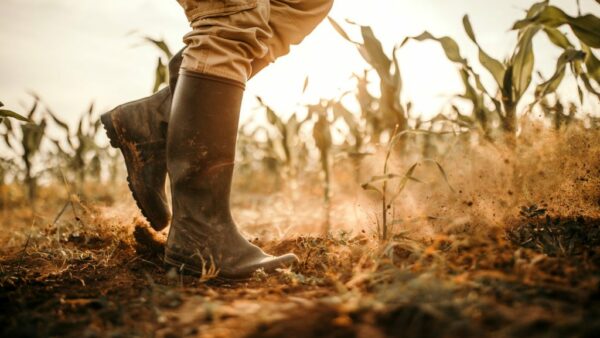How Mary-Dell Chilton, Robb Fraley and many others transformed an industry.
Progress and change don’t just happen. There are forces behind them and often times those forces are people who won’t stand for the status quo. These individuals are passionate about a cause, have an unwavering drive and seek solutions. Without these individuals, the world and the seed industry would be in a very different place than we are today. As an industry, we owe a great deal of gratitude to the following individuals for their dedication to the industry and the resulting achievements. For they are responsible for revolutionizing the industry — be it through scientific advancement, education, leadership or policy.
Mary-Dell Chilton
Her work and drive is nothing short of amazing. Best known for producing the first transgenic plant in 1983, Mary-Dell Chilton’s achievement has furthered the field of science and helped to propel the world of production agriculture forward — by leaps and bounds. Today, transgenic or biotech crops are grown on 448.5 million acres in 28 countries by more than 18 million farmers, according to the Acquisition of Agri-biotech Applications, and those numbers continually increase.
These numbers don’t just benefit farmers, they benefit consumers, the environment and society as a whole. Transgenic crops allow farmers to grow more food without using more land. A report from PG Economics shows that if crop biotechnology had not been available to the 18 million farmers who used the technology last year, maintaining global production levels would have required additional plantings of more than 44 million acres.
Through the years, Chilton has received many accolades for her work, including being named a 2013 World Food Prize winner. Most recently, she was inducted into the National Inventors Hall of Fame for patent No. 6,051,757 as part of the 2015 class. Those standing next to her included individuals responsible for the x-ray spectrometer, graphical calculator, surgical needle and regenerated skin.
Through the years, she has authored more than 100 scientific publications. At the age of 76, Chilton shows no signs of slowing down. The scientist’s natural curiosity about the world around her keeps her coming to the laboratory at Syngenta every day — something she’s been doing since 1983 when she started working for CIBA-Geigy, a legacy company of Syngenta. Today, Chilton’s work focuses on gene targeting.
“Gene targeting means the ability or method of putting a package of genes into the plant chromosome in a place that you have predetermined,” Chilton explains. “With present day technology, the DNA goes random — any place it wants to go. We would like to be able to put an address label on that DNA and send it to the same place every time.”
Chilton expects that by using this technology the gene expression will be more stable and more uniform over time. “I think that will be of great value,” she says. “The other reason for doing this is that we think the regulatory process will be more brief because you know a great deal more about the target site within the plant genome.”
Chilton recognizes that there’s been a lot of debate about the safety and benefits of this technology. When asked why she believes transgenic plants and the fruits or products derived from them are safe, she explains: “I know the methodology very well, and what I know is that it’s a natural process that has gone on in nature for centuries. We’ve just copied the process and do the same thing that a bacterium does in nature. So if it’s a natural process, why should people be afraid of that?”
Chilton’s research didn’t start with plants. She was interested in the bacterium that infects plants. “It was the bacterium that got me into plant science,” Chilton says. “Plants just kind of happened to me.”
The same can be said for science; it came to Chilton naturally. She recalls her high school biology teacher telling her that she had scored so high on the science aptitude test that the text examiners had thought she cheated. “He suggested based on that, that I might want a career in science,” she adds.
Looking back, Chilton says her career in biotechnology has been an exciting journey. “I’m amazed to see the progress we have made over the years,” she says. “My hope is that through discoveries like mine and the discoveries to follow, we will be able to provide a brighter and better future for generations that follow us.”
Robb Fraley
A familiar face within and outside of the seed industry, Robb Fraley has challenged himself to join public conversations, sometimes contentious, about the very technology he helped to create. In 1983, Fraley, along with Mary-Dell Chilton and Marc Van Montagu, each conducted groundbreaking molecular research on how plant bacterium could be adapted as a tool to insert genes from another organism into plant cells, which could produce new genetic lines with highly favorable traits.
Thirteen years later, Fraley helped to lead the successful commercial launches of the first genetically modified crops, Roundup Ready soybeans and Bollgard insect-protected cotton. Today, these crops are hailed by more than 18 million farmers in 28 countries as helping to improve productivity and ultimately their livelihoods. From 1996 to 2013, global farmer income gained from biotech crops was an estimated $133.5 billion, according to PG Economics.
Fraley, who is from a small town in central Illinois, has always been involved in agriculture, and it’s something he’s always been passionate about. Today, Fraley serves as executive vice president and chief technology officer at Monsanto, overseeing the company’s global
technology division, which includes plant breeding, plant biotechnology, biologicals, precision agriculture and crop protection.
“First of all, this has got to be the most exciting time to be in agriculture,” he says. “And, I would argue, probably the most important time. It’s exciting from the point of view that we have so much opportunity for innovation.
“Today, we are beginning to see brand new platforms with data science and the ability to map fields, subdivide them into smaller segments and farm meter by meter to optimize our yields and productivity. I believe that with the advances in biology and the advances in data science, we will see another Green Revolution.”
Fraley says that as the world population grows to the 9.5 or 10 billion people that is expected by 2050 coupled with the increase in wealth accumulation, especially in Asia and Africa, that agriculture will need to double food production in the next 35 years. “That’s an incredible challenge but with the right tools, we can do it,” he says. “I have no doubt that we can meet the food security needs of the future. And I actually think that as we improve yields and productivity, by the time we reach 2050, we’ll even have the opportunity to convert some of the lands that we farm today back into forests, pastures and wetlands. We can be that efficient. The challenge is will we be able to use the tools available.”
To help ensure that agriculture and today’s scientists can use the tools we have available, Fraley has joined the dialogues discussing how today’s food is produced. “What I’ve learned is that first you have to join the conversation,” he says. “Food is a personal conversation, it’s important that people’s questions get answered. That’s why as an industry we’ve pulled together independent experts to answer people’s questions on GMOAnswers.com. I am personally very active on social media.”
In getting in to the mix, he says it’s also important to understand that there are extreme voices on both sides of this debate. There are critics who will never like new ag technologies or GMOs and there are advocates. There’s also a group in the middle, which probably comprises about 80 percent of the general public, he says. These are the people interested in learning more about food, how food
is produced, its nutritional value and affordability.
“That’s the group that we need to speak to,” he says. “When I see us doing that, we can change views, we can change attitudes and people understand.”
The second lesson Fraley has come to learn in participating in these discussions is that science has to take a backseat. “This is really about trust and establishing a connection and finding that common ground,” he says. “Some people care about food nutrition and affordability for their families and that’s a great conversation. Some folks think about a growing world and feeding people who are not as fortunate, who are hungry. Others focus on our growing global population and more people in the future, and that’s also a great basis for a conversation. Others really focus on the environment and how we can use technologies to minimize the impact that agriculture can have on the environment.
“What I’ve found is that it’s important to establish that common ground. Then you can build on that, make a personal connection and bring in the science and the tools.”
He’s explains that this has been counter-intuitive for him as a scientist, but says it’s worked really well.
Like Chilton, Fraley has also received numerous accolades, including the 2013 World Food Prize and the National Medal of Technology in 1998 from President Clinton. He has authored more than 100 publication and patent applications relating to technical advances in agricultural biotechnology.
In his role today, Fraley is an inspiration to many young scientists. He demonstrates what it takes to lead. He is a champion for agriculture and the seed industry and isn’t afraid to push the envelope.
Photo: World Food Prize.
David Garst
David Garst helped build quite the seed industry legacy.
Many longtime members of the American seed industry likely recall the “Garst Guy” and “Garst Gal” advertisements on the radio, and print advertisements proclaiming “It’s Gotta be Garst” and the royal blue lettering on plot signs and seed bags for Garst brand seed.
High-yielding hybrids, innovative corn technologies and an entrepreneurial approach to growing corn are among the attributes corn growers throughout the Corn Belt likely associate with the Garst seed brand, Syngenta noted in 2014 when it rebranded Garst seed under the Golden Harvest brand. Syngenta acquired the Garst brand in 2004.
David Garst’s father co-founded the Garst & Thomas Hi-Bred Corn Company in Coon Rapids, Iowa in 1930. The Garst brand grew over the years through a series of mergers and acquisitions, and David went to work for the company in the late 1950s, eventually becoming president in 1982 at the age of 56.
In 1983, Garst and Thomas split and the Garst Seed Co. was formed. Under David Garst’s direction, the brand flourished and went on to bring many innovative corn solutions to market. It led the way in developing herbicide-tolerant hybrids, including the first IMI-corn. It also was among the first seed companies to offer European corn borer (Bt) control and herbicide tolerance together in one corn hybrid.
“Even though the Garst name won’t have the same market presence, the integrity, tradition and history of the company will continue to live on,” says Lori Thomas, customer marketing manager for the dealer channel commercial unit for Syngenta in North America.
Henry Wallace
Although he had a lot of influences along the way, Henry Wallace’s groundbreaking achievements in the breeding and marketing of hybrid corn can be traced back to one person — his mom.
Growing up in Iowa, Wallace’s mother shared her love of plants with her young son, and taught him to cross-breed pansies. From there, his interest in botany and agronomy only grew. As a child, he befriended and learned a great deal from world-famous botanist George Washington Carver. Carver was a student at Iowa State University at the time, and he lived with Wallace’s family because African Americans weren’t allowed to live in the university’s dorm.
Carver’s influence on Wallace was big. By the age of 10, Wallace was experimenting with plant breeding in his own personal plot. Just five years later, he disproved the conventional wisdom that ear appearance — row uniformity, kernel shape and length — could predict yield. Wallace is now credited with introducing the very concept of hybrid vigor.
He developed the first commercial hybrid corn in 1923. Confident that hybrid seed corn was the future, Wallace would go on to form the Hi-Bred Corn Company in Des Moines in 1926. By the early 1930s, farmers were taking notice — around 1 percent of the corn planted in Iowa came from Wallace’s hybrid seed. That number steadily rose, and by the mid 1960s almost the entire U.S. corn crop came from hybrid seed corn.
The Hi-Bred Corn Company later became Pioneer Hi-Bred, which was purchased in 1999 by DuPont. It is now called DuPont Pioneer.
James Watson & Francis Crick
For centuries people have used DNA and genetics to create better, more useful plants and animals through breeding. It has long been a slow process built on trial and error.
More than 60 years ago, two scientists led a team whose discovery would eventually change that process and agriculture as we know it.
James Watson was interested in the building blocks of life at a young age, and after his doctoral work at Indiana University, spent some time in England where he met Francis Crick. Crick, who was absorbed with science as a child in England, was studying the structure of proteins at the University of Cambridge.
The two hit it off. Knowing that DNA was the key to understanding life, they decided to determine its structure. They did just that in 1953 with Maurice Wilkins and Rosalind Franklin. Watson and Crick shared the 1962 Nobel Prize for Physiology or Medicine with Wilkins.
The discovery did not immediately revolutionize agriculture, but it did eventually lead to modern methods of selecting for desirable traits. Genetically modified plants can boost yields, protect against pests and impart herbicide tolerance that allows growers to keep fields clear of weeds. Companies are developing plants that can thrive in once inhospitable conditions, such as highly acidic soil, as well as plants that can survive rising temperatures and drought conditions, among many characteristics.
Watson went on to do research at Harvard University and then Cold Spring Harbor Laboratory, known worldwide for its work in cancer, neurobiology and basic molecular genetics. He was also director of the National Institutes of Health’s Human Genome Project.
Crick spent much of his career at the Medical Research Council at Cambridge and the Salk Institute in California, where he studied developmental neurobiology.
George Washington Carver
Cotton was the undisputed king in the South. But when the boll weevil threatened the crop at the turn of the 20th Century, George Washington Carver gave farmers the peanut.
Today, it’s hard to think of Carver and not think of peanuts. He purportedly developed more than 300 uses for the legume, as well as many products for soybeans, pecans and sweet potatoes.
Carver was born a slave in Missouri in 1864. Before he could read, Carver had developed a green thumb, helping neighbors revive sick plants and earning him the nickname the “plant doctor.”
Carver went on to earn degrees from what is today Iowa State University, becoming its first black student, where he gained national prominence for his work in agriculture. Recruited by the Tuskegee Institute, Carver headed the school’s agriculture department and shaped its curriculum and faculty.
Carver and Tuskegee’s faculty worked on crop rotation, fertilization and the development of alternative cash crops in the South, which was dealing with the devastation of the boll weevil starting in the early 1890s. His goal was to improve the lives of poor southern farmers.
Carver focused on chemistry to develop new uses for crops, which led him to develop peanut-based cosmetics, insecticides, glues, plastics and even a gasoline. He also taught farmers how to rotate legumes into fields to help them restore the nutrients so rapidly depleted by years of growing cotton.
Speaking to the United Peanut Association of America’s 1920 Convention, and later a Congressional committee on the need for a peanut tariff, forever intertwined the scientist’s name with the legume.
Theodore Roosevelt and Mahatma Gandhi sought Carver’s advice on agricultural matters, and the British Royal Society of Arts made him a member.
Sanjaya Rajaram
Seeing a son that wanted to learn about the world, Sanjaya Rajaram’s parents sent their son off to school, something few people in northeast India were able to do in the late 1940s and 1950s.
Rajaram left the 5-hectare farm on which his parents grew wheat, rice and maize, and he excelled, much to the benefit of people just like his parents.
Rajaram’s schooling led to the University of Sydney, where his advisor saw potential and sent him to work with Norman Borlaug, the father of the Green Revolution, who was head of the wheat breeding team at the International Maize and Wheat Improvement Center (CIMMYT) in Mexico.
The move put Rajaram’s career on a path that led Borlaug to one day call his protege “the greatest present-day wheat scientist in the world.” After Borlaug won the Nobel Peace Prize in 1970, he turned to Rajaram to succeed him at CIMMYT.
Rajaram thrived in the position, and wheat has never been the same.
Rajaram was able to cross spring wheat with winter wheat, varieties that had been separated for hundreds of years, to produce new plants that could withstand a range of climates and conditions, including marginal lands and acidic soils in South America.
Overall, he developed 480 wheat varieties that are resistant to rusts and other diseases. And his varieties, grown in more than 50 countries, yield as much as 25 percent more grain.
Rajaram, now a Mexican citizen, is founder of Resource Seeds International. For his contributions to wheat breeding and genetics, he received the 2014 World Food Prize, the first wheat scientist to receive the award.



